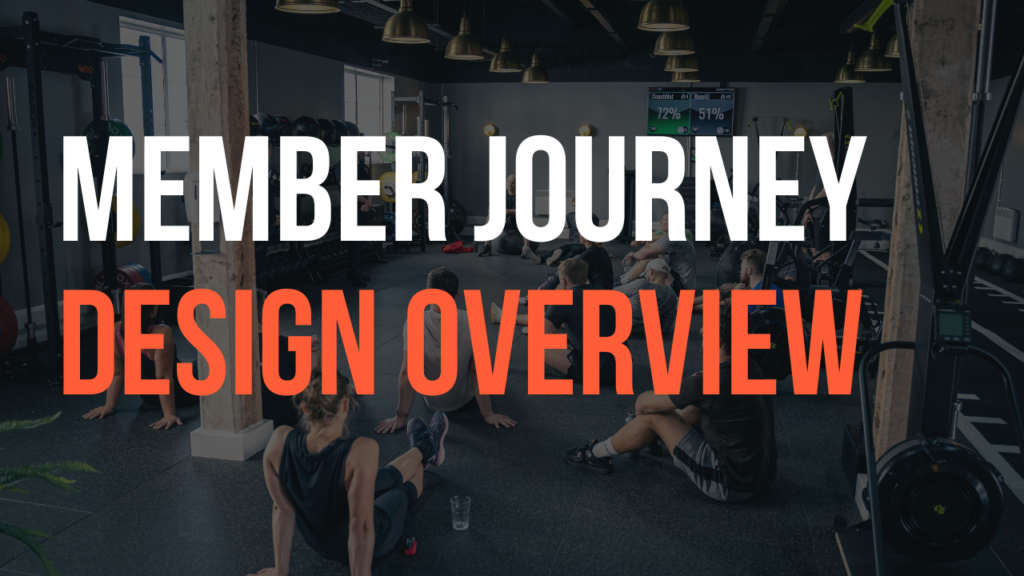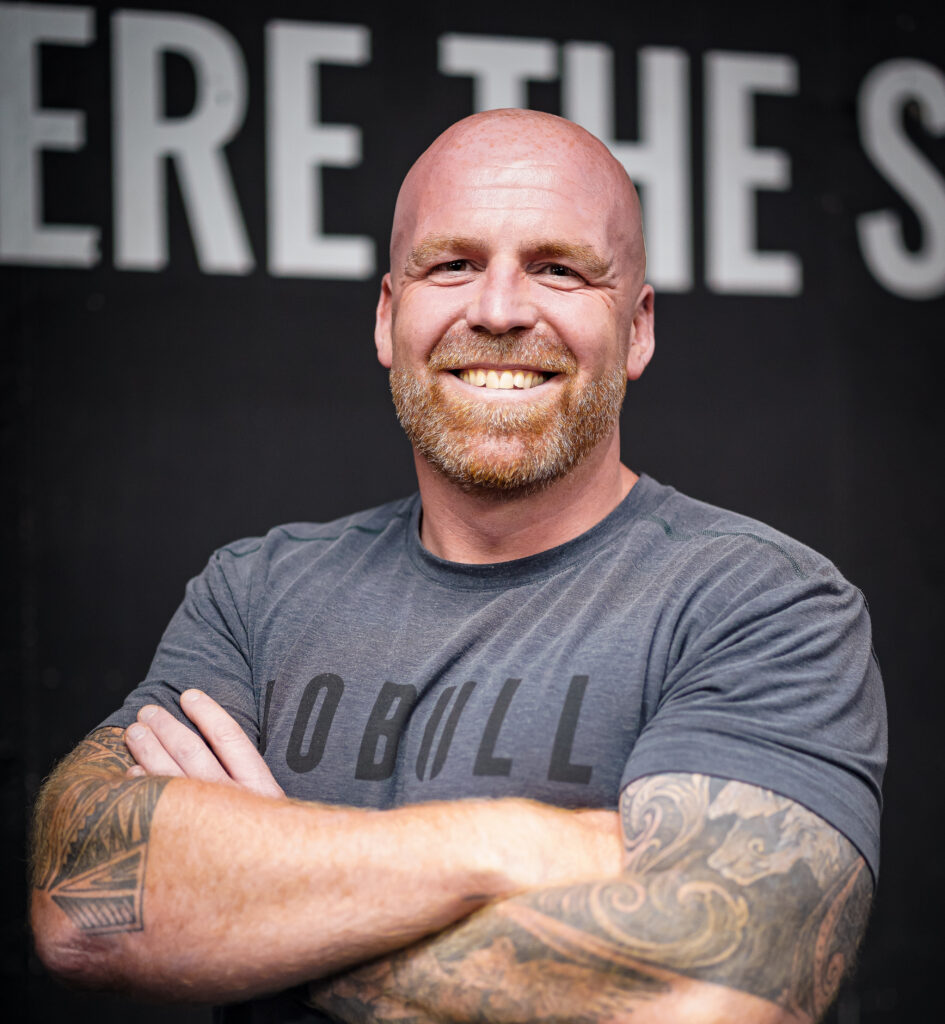Here’s our systematic, tried-and-tested approach to designing (and implementing) an industry-leading client experience.
For too long, the fitness industry has thrown new clients in at the deep end with no support.
This is fine for the experienced gym bunnies, but for those people who have failed in the gym or have never been to the gym, this hands off approach won’t work.
To engage, onboard, and hold onto our members, we need to create a seamless experience that nurtures the client from first contact through to lifetime loyalty.
The Stages of the Member Journey
The member journey overview allows us to take a step back and see the overall experience that a person has over the course of their time as a member.
The stages involved in this should be the same for pretty much every high-ticket, coaching-led fitness business:
- Marketing – getting your offering in front of your potential client and engaging their interest
- Sales – taking this engagement and converting it into the purchase of a trial membership
- Trial – letting your client ‘try before they buy’ so they sign up for a full membership
- Onboarding – creating lifetime loyalty to the business and brand
- Retention – making members want to stick around for years, and refer their friends
Why is the member journey important?
- It gives the client a clear idea of the journey they’re about to embark on
- It helps the client feel less anxious about the ‘unknown’
- It makes it easier for all your staff to provide the same excellent experience to every single client
- It strengthens brand identity and core values – it’s a direct expression of what you stand for and ‘how things are done around here’
- It reduces the amount of client drop-off from initial contact (in the marketing stage) all the way through to years into their membership
- This increases yield per member and lifetime customer value, boosting your bottom line
- This excellent experience makes clients refer the gym to their friends and family
- It reduces marketing costs as you’re holding on to the same clients for longer, instead of having to shell out for a high number of new leads
- It gives clients multiple, structured touchpoints with the staff and other members – this helps build relationships and community in the gym
- It saves time and resource for the business owner and staff, as the process is streamlined and effective, not hit and miss
- It gives you a framework to measure how well your marketing, sales, and onboarding strategies are actually working – and gives you the data and insight you need to make them better
Does your client experience need an overhaul? Download our tried and tested Member Journey Design here to benchmark your approach.

The Principles of Journey Design
The Member Journey will look different for every facility and fitness business.
For example: a city centre club catering to high flying career types might be focused on giving clients the biggest bang for their buck – short, sharp interventions that can be fitted in around a packed schedule that often takes the client abroad.
A more rural club, in contrast, might cater to a demographic that have more time on their hands, and are looking for a fleshed out community experience at a lower price point.
Despite these differences, there will always be key qualities of the journey design process that hold true.
Market focus
Every member journey design needs to start with an understanding of the market in your geographical location – and the demographics and psychographics of the client population.
- Are there a lot of stay at home parents who want to juggle health and fitness around young children?
- Up and coming young professionals?
- More mature types nearing retirement and looking for strength and longevity?
- How well are these groups catered for already by existing facilities?
- Where are the gaps in provision?
- How can you create a ‘market of one’ that provides exactly what a certain group of people need, so you become the only ‘right’ choice for them?
This insight gives you the foundation of your marketing and sales approach. But you also need to have a handle on the exact needs and wants of your target population if you want to design a member journey that serves them effectively.
Transparency
Whatever your member journey looks like, it needs to be clear and well communicated.
This means that your clients understand how their journey will unfold, giving them a path into the future that helps with motivation, progress tracking, and retention.
It means that your staff know exactly what they’re doing when they’re guiding clients through the journey: they understand the stages, what their role is for each, and how to communicate the process to the members.
It also means that from an operational and financial point of view, you know which systems need to be in place, which metrics to measure, and how to establish both short and long term goals.
Client centricity
When it comes to designing the member journey, putting the client at the centre of your decisions is maybe the most important of all the principles. Once you understand the needs of your clients, you need to put yourself in their shoes and create a process that speaks to their pain points, their challenges, their anxieties, their aspirations, and their preferences.
At every stage of the design process, ask yourself: if I were a forty-year-old mother of two working full time, or if I were a 50 year old man trying to regain his strength, or if I were a thirty-five-year-old high flyer wanting to get into peak condition…what would I need at this point in my journey?
A staged approach
Whoever your demographic are, they aren’t going to be able to take in all the information they need at once. They also won’t be able to action each part of the journey at the same time.
This seems obvious, but too many facilities dump everything on their new joiners at the point of enquiry or evaluation, as if expecting them to be able to act on it there and then.
This often stems from either a lazy onboarding process; or from a place of anxiety that if they don’t show the client everything they’ve got from the get go, they’ll lose their business.
Neither of these hold water when you take a closer look, and both come about from a focus on what the business wants – not what the client needs.
A staged approach is an extension of the client centric perspective, but worth highlighting in its own right.
It means portioning the member journey out into manageable chunks that the client can digest easily without becoming overwhelmed. We help them ‘eat the elephant one bite at a time’.
In other words, health and fitness is a massive and often intimidating goal for people, and we need to portion the process out into single bitesize pieces if we want to give them the best chance of success.
This has direct crossover to our metrics, as the more intuitive and less stressful we can make the member experience, the more likely they are to feel fulfilled, that they’re achieving what they set out to achieve, and that they want to stick with us for the long term.
Does your client experience need an overhaul? Download our tried and tested Member Journey Design here to benchmark your approach.


